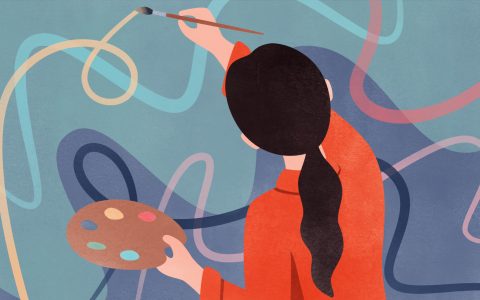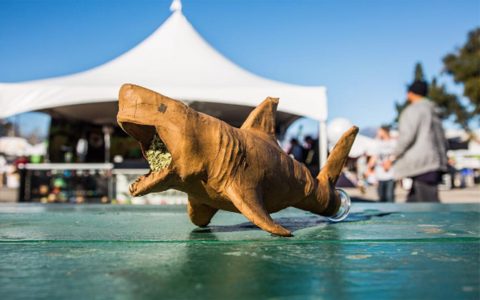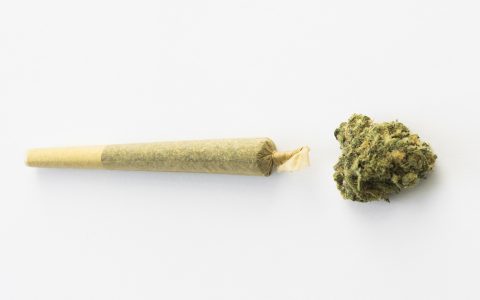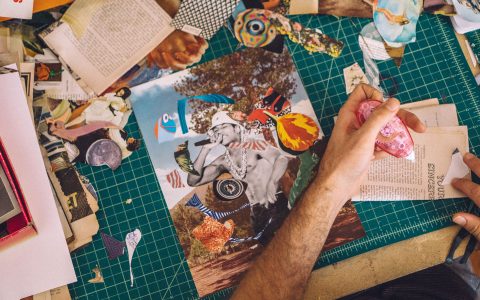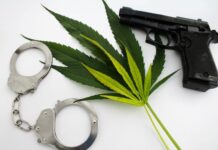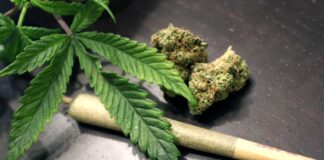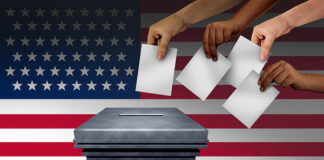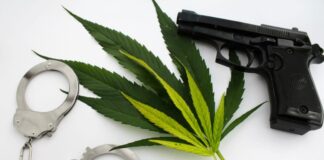Cannabis and creativity are often portrayed as linked, with their connection seeming culturally agreed upon. From creativity-themed cannabis products, to stunning hand-blown bongs, artist testimonials, and the popularity of “puff and paint” art classes, anecdotal evidence overwhelmingly says creativity and cannabis are kindred indeed.
But people have a lot less to say when it comes to the why’s and how’s behind this commonly-accepted phenomenon. Is the link between cannabis and creativity authentic? Here’s what current science has to say about it.
Blood to Your Creative Bits
Research has revealed that creativity is associated with the brain’s frontal lobe, and that cannabis consumption increases cerebral blood flow (CBF) to this area, which makes it more active. As reported by Jasen Talise in the Berkeley Medical Journal, experiments done in 1992 found that CBF increased after cannabis consumption. (These findings were confirmed by further research done in 2002.)
Talise spoke with Alice Flaherty from the Department of Neurology at Harvard Medical School, who said of CBF, “When subjects with high and low creativity are compared, the former have both higher baseline frontal lobe activity and greater frontal increase while performing creative tasks.”
Such activity stimulates creative output in two ways. First, it activates the area near the brain’s nucleus accumbens, which Flaherty found correlates to increased creativity. Secondly, the frontal lobe serves as the headquarters for something called “creative divergent thinking.”
Divergent Thinking vs. Creativity
Divergent thinking is a common scientific measure of creativity. It is a type of thinking that explores many possible solutions and typically occurs in a spontaneous, free-flowing, non-linear manner. Put in other words, divergent thinking employs methods like brainstorming, creative thinking, and free writing to come up with outside-the-box ideas.
For an example of why scientists connect this kind of thinking to cannabis use, we’ll quickly travel back to 2001. In high school, a friend of mine’s room was a 420 oasis, home to many people’s early cannabis experiences—and the walls were covered with evidence of this exposure, thoughts scribbled in marker, so creative I can still remember a few nearly two decades later:
“I feel like I’m running through Jell-O.”
“Levametation.”
“I’m a butterflyyyyyyyyyy.” (Drawn in the shape of butterfly. Author may have been involved.)
When it comes to cannabis and creativity, dosage is key.
“Levametation,” the word in the second example, was created for a decidedly outside-the-box game show proposed by its author. It combines “levitate” and “elevation” to describe a process in which cannabis smoke would hang in the air after rising from the floor below, subtly smoking out the contestants. (Cleverest whilst unwittingly stoned wins!) So in this case, divergent thinking came in the form of brainstorming various names to describe an invented process that’s as dubious as it is imaginative.
In day-to-day life, divergent thinking is commonly employed whenever you list numerous possibilities to come up with innovative options; from how to raise Q2 fiscal earnings, to how best use that Costco supply of albacore tuna. Or more broadly, you use divergent thinking whenever you’re working to open your mind in various directions and to new potential solutions. We’ll go over a few widely-referenced studies that measure this kind of thinking to discern how cannabis use affects creativity.
Low Doses Help, Big Doses Hinder
Leafly covered one such study in 2014; it concluded that when it comes to cannabis and creativity, dosage is key. The study found that in low doses (5.5 mg THC), cannabis slightly improved two aspects of divergent thinking: fluency, or the number of responses provided, and flexibility, or the variation in answers.
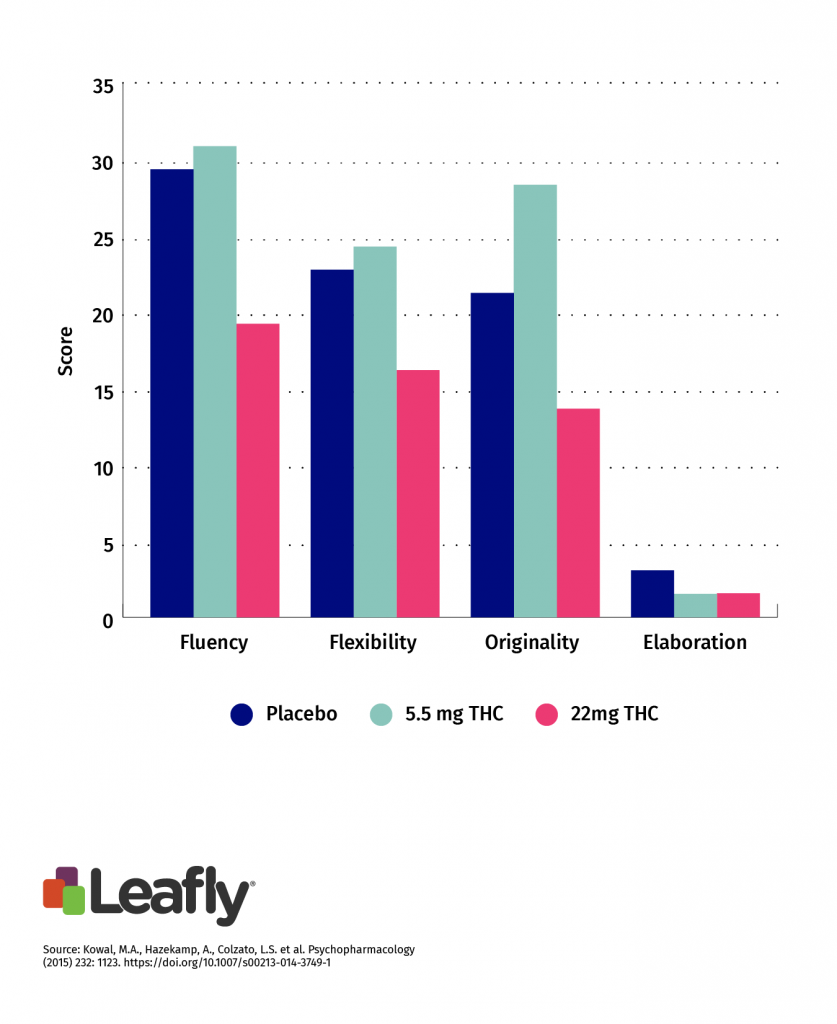
And, not surprisingly, scores were significantly raised for originality, or the uniqueness of responses. However, when the dose was increased to 22 mg of THC, scores were markedly lower in most categories. (Elaboration, or the amount of detail provided in explaining a response, was low all around—but was slightly higher in the placebo group.)
Getting Low Creatives High
Another study done in 2012 divided participants into high creativity and low creativity groups, then tested them both sober as well as under the effect of cannabis. The researchers had participants bring their own cannabis, so keep in mind that some variation in potency and chemical composition is to be expected here. Cannabis had little effect on the high creativity group, but after partaking, the scores of the low creativity group were actually boosted compared to those of the high creatives.
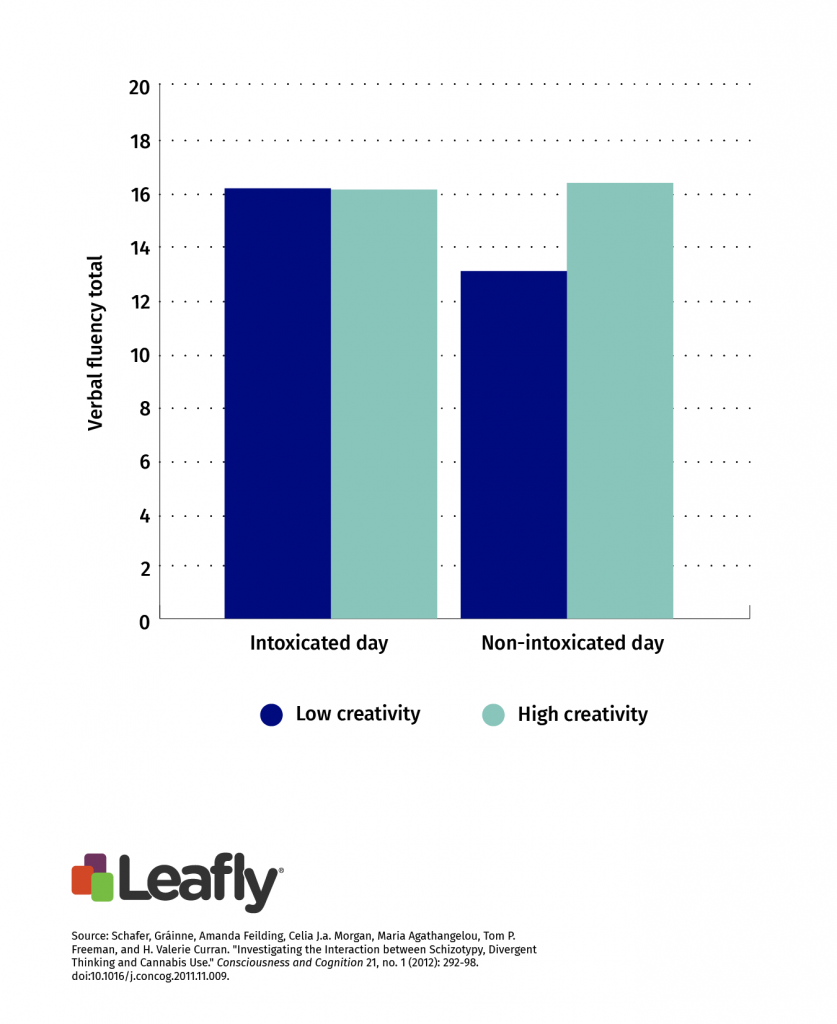
Basically, this study found that if you’re not already creatively skilled, then cannabis might help you to get creating. And if you’re already creative, this study says cannabis isn’t going to affect your creativity very much.
A Chicken and Egg Situation
The results from this final 2017 study suggest that the people hanging out in my friend’s marker-covered bedroom may have been more creative to begin with. It found that cannabis users both self-reported being more creative as well as veritably scoring higher when their creativity was tested.
However, the study also tested personality types. It used a popular measure called the Big 5, and found that cannabis users scored higher on “openness to experience.” Because this measure reflects high creativity and imagination traits, these findings lead the study to conclude, “While cannabis users appear to demonstrate enhanced creativity, these effects are an artifact of their heightened levels of openness to experience.”
These results pose a bit of a chicken-egg dilemma: does cannabis use improve creativity or do creative people just tend to like cannabis?
In the End, See What Works for You
As with other areas of cannabis research, there’s a lot of work to be done in regard to studying the link between cannabis and creativity. But, in summary, research suggests:
- Cannabis increases cerebral blood flow, which points to stimulated creative output.
- However, too much THC can actually hinder creativity, while a smaller dose has been found to help a little.
- Cannabis can make less creative people more so, but has little effect on those who are already creatively advanced.
- There are more creatively advanced people within the population of cannabis consumers.
In the end, scientists don’t have a hard conclusion on this very abstract matter. So if you’re already creative and attest that cannabis does further increase your ability, or if you do your best work after 20 mg of THC, then how scientists predict you’ll score on a specific verbal fluency test isn’t particularly relevant.
Do what works for you. And if you’re still figuring out how cannabis affects you creatively, try playing with different dosages, creative activities, strains, and environments to see if cannabis can help you tap into your inner artist.




